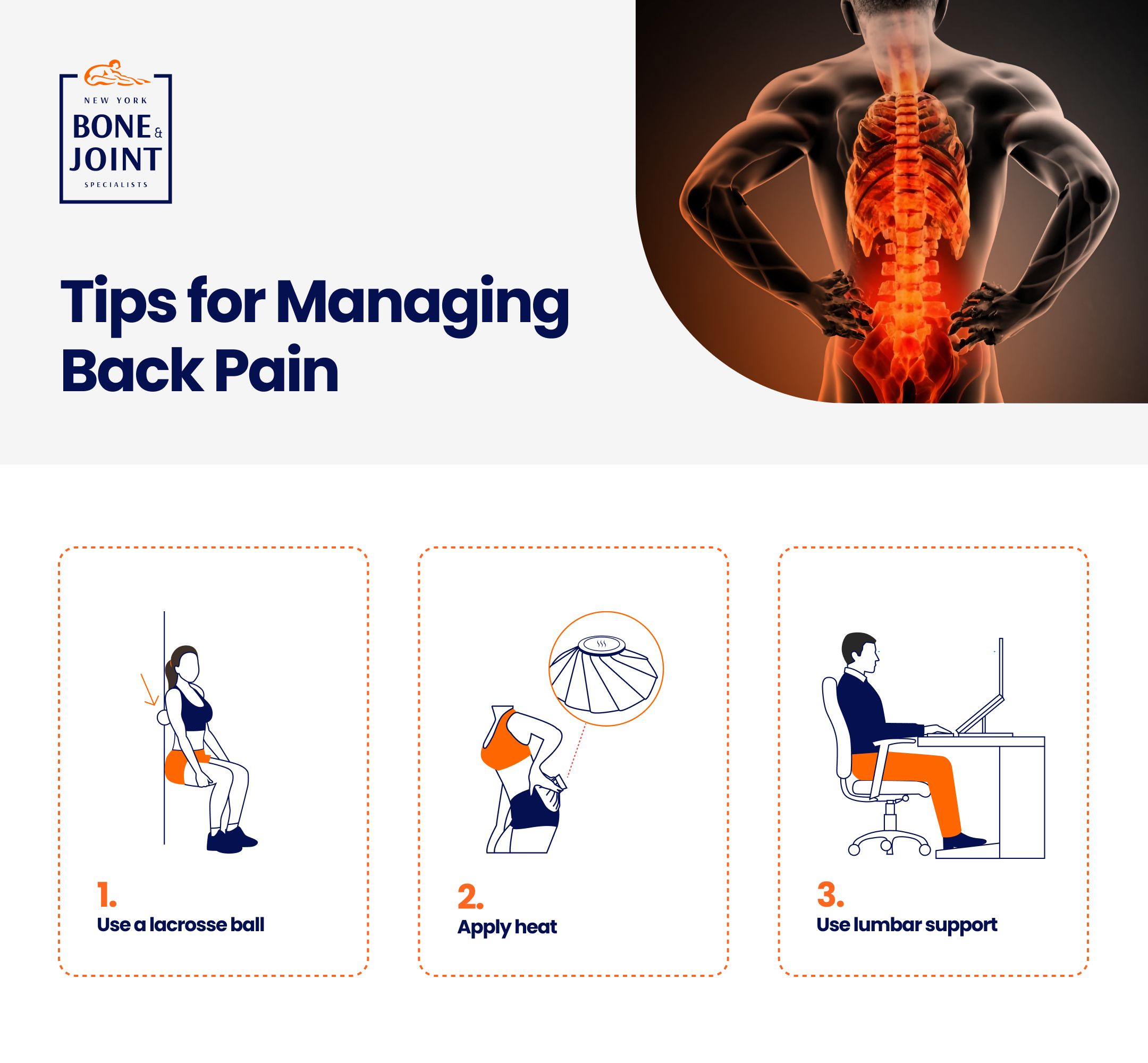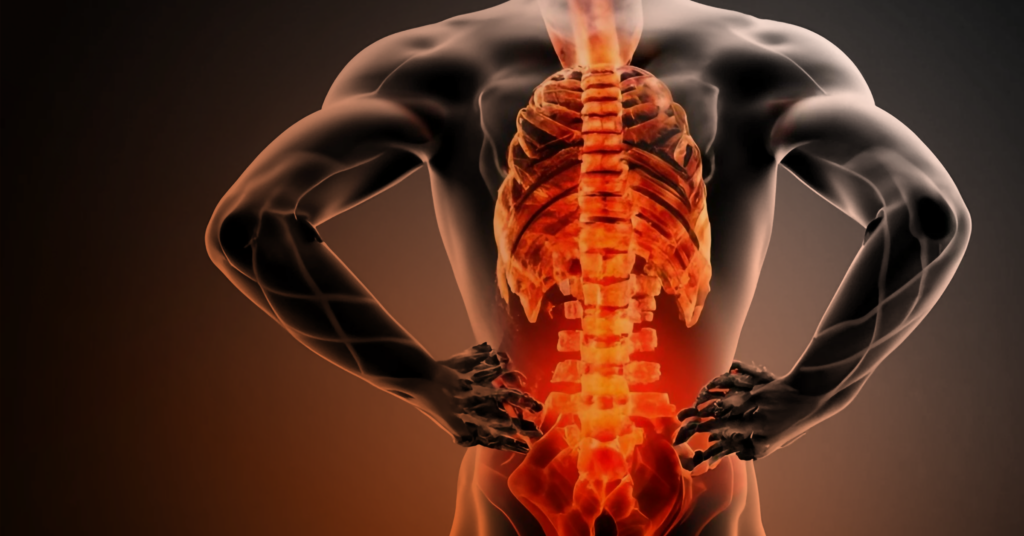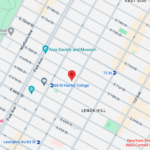Back pain can be debilitating, severely affecting your daily life. Getting to the root of the problem is essential to starting recovery.
Almost 16 million people per year – or 8% of the US population – report suffering from back pain of some kind. From post-workout aches to serious spinal conditions, there is a wide variety of potential culprits when it comes to identifying the cause.
Common causes of back pain
Lower left back pain and lower right back pain often present with the same causes.
Muscle or Tissue Injury
Sprains, strains, and muscle overuse are the most common causes of back pain. These injuries are often the result of overworking at the gym, sporting injuries, or falls and accidents.
Along with pain, a muscle or tissue injury will cause:
- Stiffness
- Reduced motion
- Inflammation
- Muscle spasms
Herniated Disc
A herniated disc is an injury that places pressure on the joints of the spine. Pain from this can feel severe and usually radiates to one side of the back. Tingling in the legs and worsening pain when moving are also giveaways that you might have a herniated disc.
Arthritis
Arthritis is inflammation of the cartilage and can affect people of all ages, though it is more common in those over 50. Stiffness in the back, decreased mobility, and a family history of the condition could all point to a potential arthritis diagnosis.
Kidney Illness
Some back pain is a symptom of serious kidney diseases, like infections or kidney stones. You’ll need to consult a medical professional if you think you may be suffering from a kidney-related illness.
Nerve Pain
Damage to the nerves can cause long-lasting pain that radiates across the body.
Joint Pain
Pulled tendons, damaged cartilage, and other joint issues can usually be treated with physical therapy and anti-inflammatory painkillers.
Spinal Stenosis
Spinal stenosis is a rare condition in which the spaces inside the bones narrow and tighten. This tightening places additional pressure on the nerves.
Pregnancy
Back pain is very common in pregnancy and can feel like a dull, persistent ache.
Spinal conditions
Rare curvature of the spine, like scoliosis and kyphosis often coincides with persistent and troubling back pain. An orthopedic surgeon will be able to diagnose these uncommon conditions.
Accidents
Accidents and mishaps, like slips and trips, can result in back pain from torn or bruised muscles. Be careful, especially when lifting heavy items or moving over precarious surfaces.
Can constipation cause back pain?
Constipation can cause lower back pain. Large amounts of stuck stool can place additional pressure on the nerves and muscles in the lower back, causing a dull ache.
Tips for managing back pain

Ease aching muscles and stiff joints with these tips you can follow at home.
Use a lacrosse ball as a massager
A lacrosse ball (or similarly hard ball) can help you work out tough knots in your back.
- Stand with your back against the wall.
- Place the ball between your back and the wall so that it’s touching the area where you feel pain or stiffness.
- Slowly slide up and down and side to side, pressing your back into the ball.
Doing this for ten minutes at a time, several times a day can break down knots and promote healing.
Apply heat
Heat pads work wonders for sore and tired muscles. Wrap a heat pack in a towel and lightly hold it against the area you want to target. Applying warmth for up to 15 minutes a day promotes blood flow to sore areas, encouraging healing.
Use lumbar support
Most people know the problems caused by sitting for too long – but few of us have a choice when it comes to using a desk for work. An ergonomic chair, with lumbar support, can keep your spine aligned and encourage proper seated form. You might also want to consider a standing desk if you feel comfortable working in this way for long periods.
Stretches for lower back pain
Exercise is a great reliever of back pain and stiffness. A physical therapist can help put together a stretching program that works for your needs. You may not be able to perform all of the exercises, depending on the type and severity of your injury.
Make sure you only do what you feel comfortable with and stop if you experience any increase in pain.
Here are some stretches for lower back pain.
Lower back rotational stretch
- Lie on your back with your knees bent and your feet flat on the floor.
- Slowly roll your knees to one side, keeping your back against the floor.
- Hold for 10 – 15 seconds before slowly bringing your knees up to the starting position.
- Repeat for the other side.
Hurricane Stretch
- Clasp your hands together and stretch out your arms in front of you.
- Tuck your head between your arms, tilting your head downwards.
- Push out with your arms, as if trying to push something away.
- Hold for 10 – 15 seconds.
Cat-Cow Stretch
- Start on your hands and knees. Position your hands directly under your shoulders and with your knees aligned.
- Round the spine, pushing your chin in towards your chest. Your back should be pushed up towards the ceiling.
- Exhale and hold for 10 seconds.
- Then, arch your back and drop your stomach towards the floor. Your chin should be raised upwards towards the ceiling.
- Inhale and hold for 10 seconds
- Repeat this motion 10 – 15 times.
Bridge Stretch
- Lie on your back with your knees bent and pointing to the ceiling and your feet flat on the floor.
- Press into the floor, lifting your lower back away from the ground.
- Create a straight line from the top of your knees down to your head.
- Hold for 10 seconds before slowly returning to the starting position.
- Repeat this motion 10 – 15 times.
Standing Side Bends
- Stand straight with your feet hip-width apart and your arms at your side.
- Bend to one side, sliding your arm down your leg towards your knee.
- Hold for 10 seconds before returning to the starting position.
- Repeat for the other side.
Trunk Rotation
You can do this stretch from a standing or seated position.
- With your hands crossed over your chest, twist your upper body to one side, keeping your hips stationary.
- Hold for 10 seconds before returning to the starting position.
- Repeat for the other side.
Stretches for upper back pain
Poor posture is among the most common causes of upper back tightness and pain. Incorporate some of these stretches for upper back pain into your routine to alleviate stiff and aching muscles.
Shoulder Blade Squeeze
- Sit or stand with good posture
- Bring your arms behind your back
- Pull your shoulder blades together
- Hold for 15-30 seconds while breathing normally
- Release and repeat 3-5 times
Cross Body Shoulder Stretch
- Stand or sit with good posture
- Bring your right arm across your chest
- Use your left hand to gently pull the right arm closer to your body
- Hold for 15-30 seconds, feeling the stretch in your shoulder
- Release and repeat on the other side
Child’s Pose
- Start on your hands and knees
- Sit back on your heels
- Extend your arms forward on the floor
- Lower your chest toward the ground
- Rest your forehead on the floor
- Hold for 30-60 seconds while breathing deeply
Thread the Needle Stretch
- Start on hands and knees
- Lift your right arm and “thread” it under your left arm
- Lower your right shoulder and side of your head to the floor
- Extend your left arm forward or overhead for a deeper stretch
- Hold for 15-30 seconds
- Return to the starting position and repeat on the other side
Chin to Chest
- Sit or stand with good posture
- Slowly lower your chin toward your chest
- Feel the stretch along the back of your neck
- Hold for 15-30 seconds
- Gently return to a neutral position and repeat 2-3 times
Standing Side Reach
- Stand with feet hip-width apart
- Raise your right arm overhead
- Bend your upper body to the left
- Keep both feet planted firmly
- Hold for 15-30 seconds, feeling the stretch along your right side
- Return to the center and repeat on the other side
Remember to breathe deeply throughout these stretches and never push to the point of pain.
When should you see a doctor for back pain?
Chronic back pain can worsen with time. The good news is that physical therapy is not only the most conservative but often the most effective way to treat injuries before they get more serious.
You should consider seeing a New York Bone and Joint specialist if you’ve been struggling with pain for longer than a week or two. An orthopedic specialist, like those of our in-house team, will diagnose and treat your injury. Book an appointment today.




